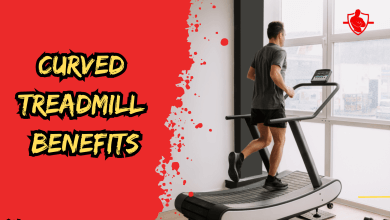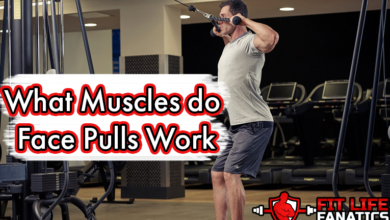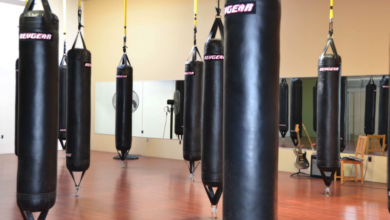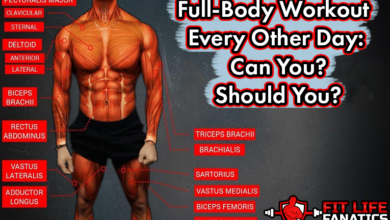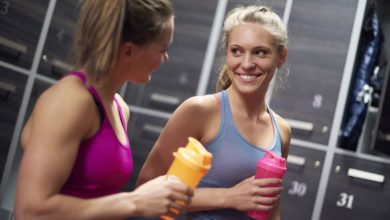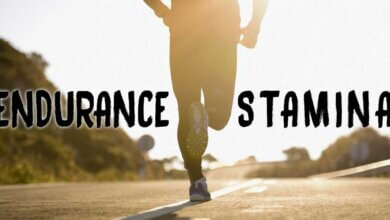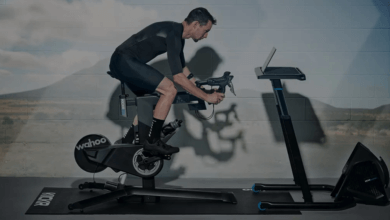Are Treadmills Bad for Your Knees, Side Effects of Treadmill on Knees, Is Walking on Treadmill Bad for Knees?
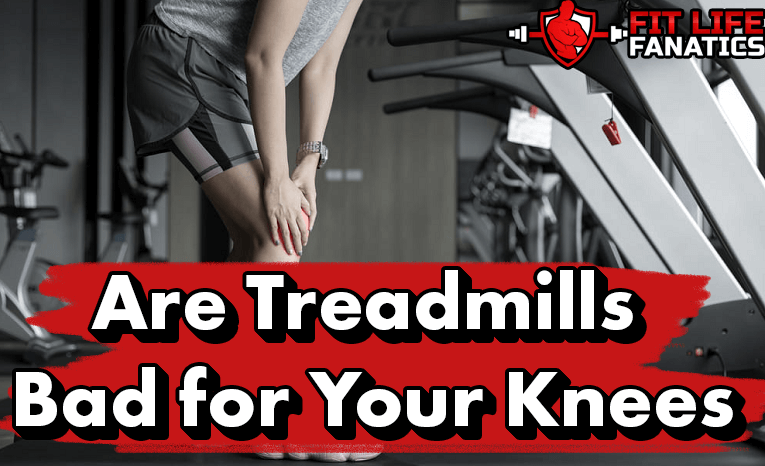
‘Treadmills are harsher on your weight bearing joints, especially the knees.’
That’s if the internet is to be believed.
The question is, is this based on hard facts?
Should you take it with a large grain of salt and just hop on that treadmill for your every day runs?
The fact lies somewhere in the middle. Just like most fitness related things that you read on the internet, this is a half-baked statement. But it’s beginning to be pushed a lot more these days, often as gospel sandwiched in targeted advertising along with other information to lure in prospective treadmill shoppers.
I too was fed this when I decided to buy a treadmill during the lockdown.
‘Hey wait, don’t you have a bad knee after that ACL tear years ago’?
‘A treadmill’s gonna make things so bad that you won’t be able to walk for a long time’
But after speaking to my PT and my coach, who gave me the go-ahead, I decided to dig up all the information that I could find on this topic.
What you are about to read, is around 2-months of research compiled into a 3000 word article. By the end of this, you’ll be armed with enough information to counter random statements such as these.
Also, you will be able to find yourself a decent treadmill that offers more cushioned moving belt. Unlike the typically rough outdoor running surface, this makes treadmills use better suited for regular exercise routine as it absorbs the force created with each step.
Is Running on The Treadmill Really Bad for Knees?
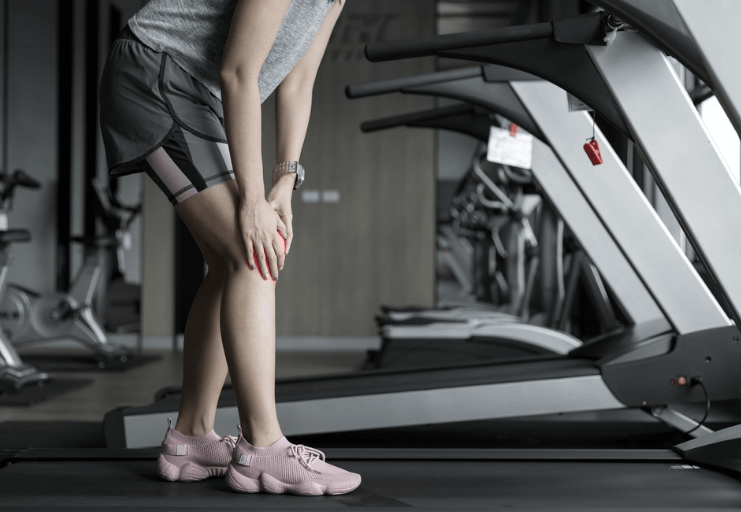
That depends on a multitude of factors. Let’s quickly look at the most important ones and try to understand the reasoning behind it.
Do you have a pre-existing knee injury?
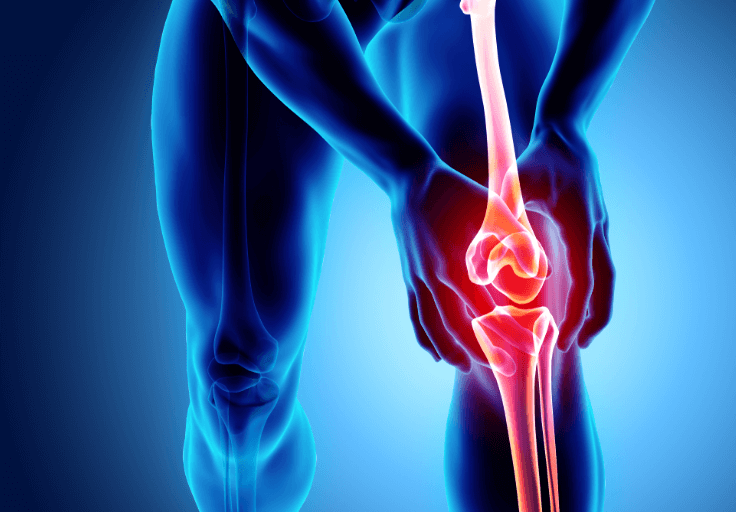
This is probably the most important factor that determines whether or not, treadmills can mess with your knees. If you have an existing injury, then there’s a distinct possibility that treadmills may aggravate it. If you had an injury in the past and have recovered fully, then treadmill might in fact be a better option as compared to the hard outdoor ground.
Have You Analysed Your Running Gait?
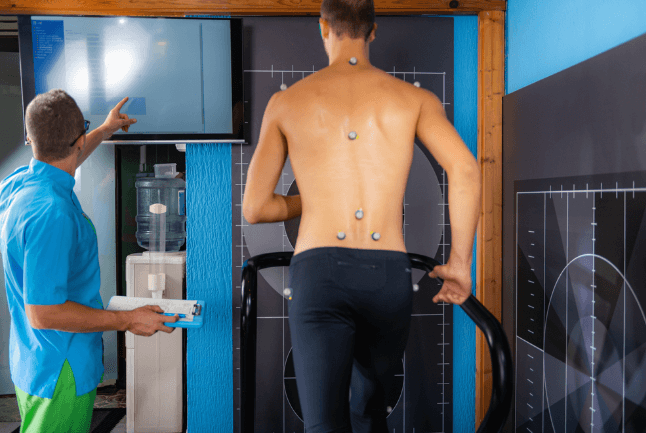
A majority of the problems with treadmill running can be attributed to poor posture. That’s why it’s important to get your running gait analysed by a professional like an exercise physiologist. For a lot of home users, this may seem like an unwanted, added expense.
But trust me, it will probably be nothing as compared to the weeks and months of agony and taking pain relief meds that an injury can result in. Besides, it’s so easy to get a gait analysis done and extract insights from a pro to make the right adjustments.
Just record a video of you walking or running on the treadmill (can be done every day or every other day) and send it to any running coach. Trust me, even with all the different devices out there, none will give you as reliable info as a trained personnel can.
These two are the primary factors that will determine whether running on the treadmill is any better or worse than running outdoor for you.
Does Using the Treadmill Put More Strain on Knees than When You Are Walking on The Ground?
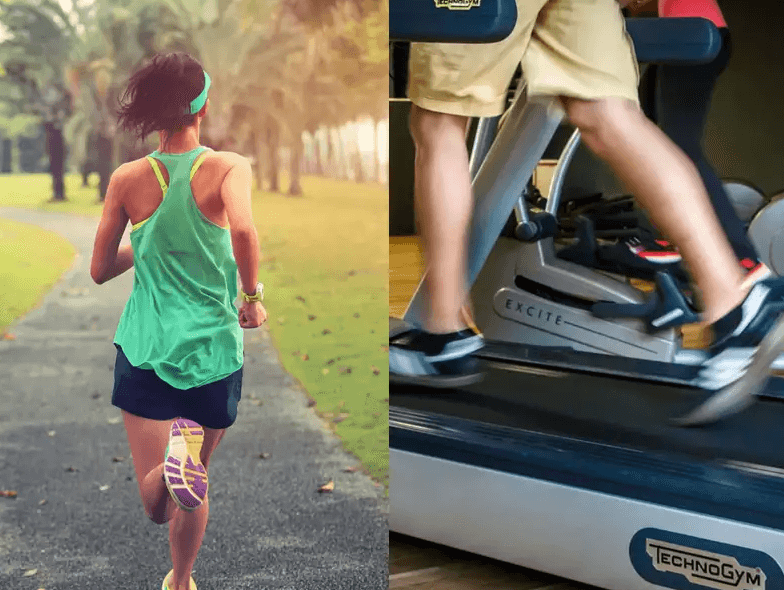
To understand the concept of ‘strain’ on the knees, it is important to know how the various muscles come together to flex and extend when we run. Along with this, we also need to understand running biomechanics and the role of impact forces. This might get slightly technical though. So hang on.
The Muscles

We all know that running involves a whole bunch of lower body muscles. But most of it is beyond the scope of this article. So we are going to stick to the important bits.
Running is an amplified version of walking, in terms of locomotor activity. I call it amplified, because you need more balance, muscle strength and mobility to run. We need greater balance because there are at least two phases during the run, in which one or both of your legs are off the ground.
The Phases

Here’san overview of the different phases that culminates in a run.
It begins with the stance phase, followed by the swing phase, the float phase and the heel strike. In all these phases, the heel strike is the one that we should be most concerned about, because that’s when impact forces come into play.
Impact Forces
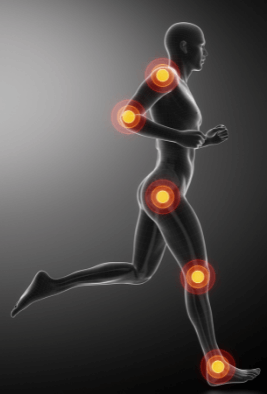
Your body encounters impact forces that are twice or thrice your body weight when you run. For these extreme forces to be evenly distributed, all the important muscles in your lower body must have strength, coordination and mobility.
The problem though, is that most of us lack the kind of mobility and strength it takes in the lower body. We are talking about strength in the Gluteus Maximus, Gluteus Medias, TFL, and Iliopsoas, quads, medial hamstrings, gastrocnemius & the tibialis anterior.
Joints
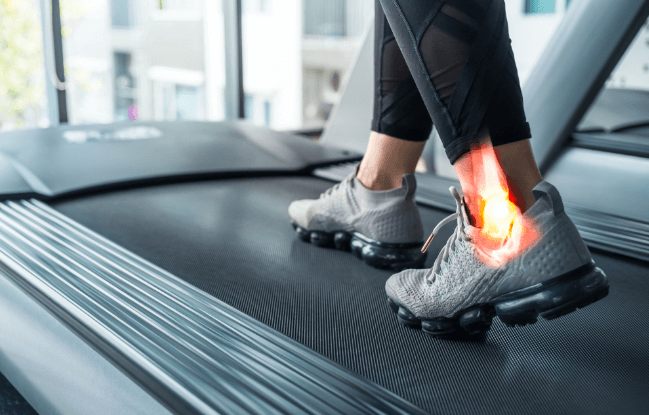
When you land on any surface, be it the treadmill or asphalt, there are two primary joints that come into play. There’s the kneecap (patella-femoral) and the Achilles tendon, which is the tendon at the tapering end of the calf.
If you have an optimal running gait, and all the muscles that I mentioned above have strength, flexibility and mobility, then the impact forces will evenly be distributed. Your legs will function like springs which coil to store energy and flex to release it.
In other words, you will not have a problem irrespective of whether you are running on treadmill or on concrete. Here’s a study that shows the both surfaces result in identical loading forces.
However, the study also shows that treadmill running might produce slightly more stress on the Achilles tendon. Why does this occur, one wonders.
That’s because the Achilles tendon comes into play when the leg is behind you during the run. A treadmill belt is constantly pushing the surface behind you. So, you’d have to compensate by making a slight adjustment to your running gait to reduce the strain on your Achilles. Generally, its lifting the leg a fraction earlier. That’s it.
The takeaway is that if your muscles are strong enough and you have the right running form, your knees are not going to get overstrained by running on a treadmill. Your Achilles might though. That’s why you might consider an exercise bike over a treadmill if you have an Achilles injury.
Which Is Better for Knees Running on Treadmill vs Outside?
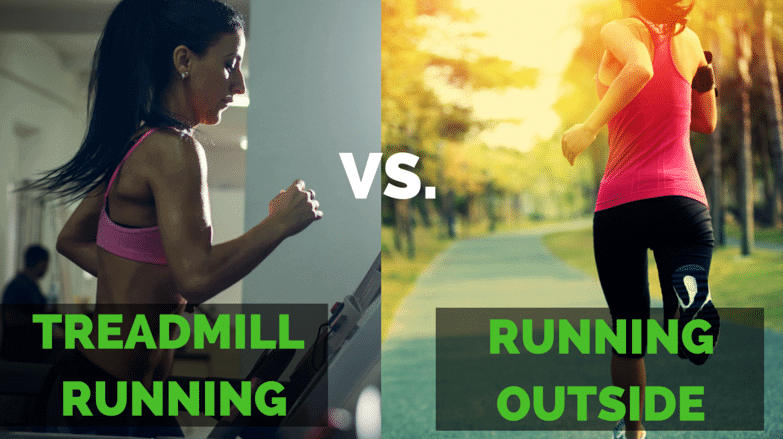
I just ran you through (Unintentional Pun) the whole process that explains how running outside vs. treadmill running produces identical load forces on your primary weight bearing joints.
So there’s no difference to the impact on your knee, as long as your form is correct. Whether you run just for a few meters to get your heart rate monitors reading, or crunch a 30 minutes moderate intensity exercise ever day, you should be fine as long as you train in a good way.
That said, there is a significant difference in the different types of muscles you engage when you run.
- When you are running outdoor, the posterior muscle chain has to work doubly hard to propel your body forward. This recruits more muscle fibres in the Gluteus, the calves, the hip flexors &the stabilizer muscles. Your body has to work a wee bit more to stay balanced. Besides, you cannot really predict that the surface will be even all during the run. You might encounter an uneven patch, a rock or two. All these things will recruit even more stabilizer muscles as your body tries to balance itself.
- One way to compensate is to set the treadmill on an incline(if you have an incline treadmill). But you need to take this slowly and make tiny increments in the incline angle. Secondly, do not hold the rails while you are running on an incline. This results in an upper pronated state, in which your shoulders are drooping and your head is rounded. There could be nothing worse for running form.
In a nutshell, running outside will result in more muscle fiber recruitment. You can possibly find a workaround for this by adjusting your treadmill speed and incline levels. But don’t forget to make adjustments to your running form along with this.
Does a Person’s Weight Have Any Bearing on Damaging the Knees While on Using the Treadmill?
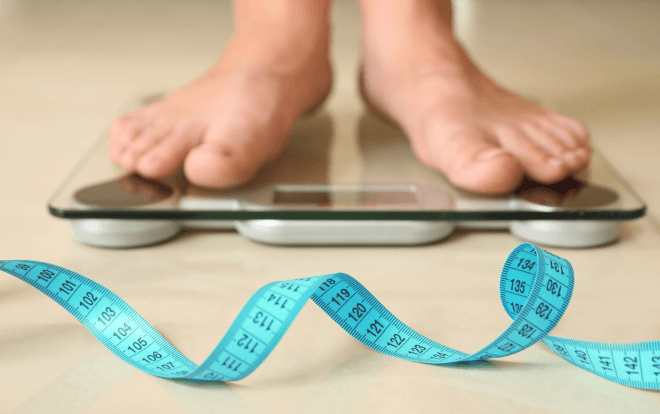
When done right, treadmill running can scorch body fat and burn a ton more calories, improve cardiovascular system health, build leg strength, and advance one’s overall fitness level. Besides, it’s convenient, you can set your own pace and progress at your own leisure, most of the treadmill models available today are foldable and some even can be tucked under your bed. I understand the appeal behind it, especially if you are overweight.
But, can running on a treadmill while you are overweight cause unwanted stress to your joints?
This is one of the commonest questions that most people have in their mind.
Here’s some clarity on this.
- When you are overweight, you are already exerting more pressure on your joints than what it normally experiences. Running typically results in impact forces about 1 ½ times the body weight. So, a 250 lb. man is exerting 375 lb. worth of impact force on his knees even with walking. If they run, that increases to 2x. That’s 500 lb. of impact force on your knees and other weight bearing joints.
- If you are restarting exercise after a prolonged layoff, it’s always likely that your muscles lack the strength and flexibility required for a high impact activity such as running. Hence, muscle strain on your leg and back muscles might be inevitable.
If you add these two factors, you should get a fair idea of what you can expect if you run on a treadmill when you are overweight. It’s a shortcut for risk of injury. It’s always better to lose weight through dietary control first.
Even a 5 lb. weight loss will result in a 10 lb. reduction in impact forces when you run. Losing 25 lb. means that your joints have to bear 50 lb. lesser force on each knee. So, drop some pounds before you consider running.
But do note, starting slow and working your way to higher intensity makes for an excellent way to ease yourself into a new exercise routine. Hitting the deck going all out at higher speeds and training for long hours is a direct ticket to overuse injuries. This is how many runners end up with shin splints especially beginners.
What Are the Possible Side Effects on Knees Due to Running on Treadmills?

The only side effects that I can think of, and any exercise physiologist or physical therapist will tell you this….boils down to lack of proper form and poor quality running shoes.
Either this, or the treadmill running deck is too hard.
I just noticed that I have been going on and on about the importance of posture while running. But I somehow failed to mention what comprises ideal running form. Here’s an overview.
A lot of first timers make the mistake of keeping their knee too straight during the heel strike. This is generally accompanied with an overly flexed ankle and a hyperextended spine. This completely messes up the natural hydraulic system that your body is blessed with. It can trigger a cascade of problems that include Runner’s knee, anterior knee pain syndrome, chondromalacia patella, and patellofemoral malalignment.
What Are the Precautions to Be Taken to Minimize Treadmill’s Impact on Knees?

All said and done, how do you minimize some of these potential side effects on the knee? There are a plethora of suggestions that you will find online. Most of them will try and sell a brand new running shoe to you.
Shoes do have their place in absorbing shock. But there are far more important things to tick off first. Let’s take a look.
- You need a treadmill that allows you to run at your full, uncompromised gait. A lot of users make the mistake of getting home a treadmill that fits into their apartment and suits their pockets. But what’s more important is that the running belt fits your stride. If the running deck requires you to compensate and make adjustments, then it’s probably going to affect your gait and may lead to an injury.
- You need flex in your joints to absorb and evenly distribute the shock that your body will be exposed to. This includes your hip, your knee and your Achilles. If the mobility in any one of these is compromised, it will result in an injury.
- The possibility of an injury is slightly more on a treadmill, if you have limited mobility in your Achilles.
Tips on Properly Using a Treadmill to Protect Knees from Injury
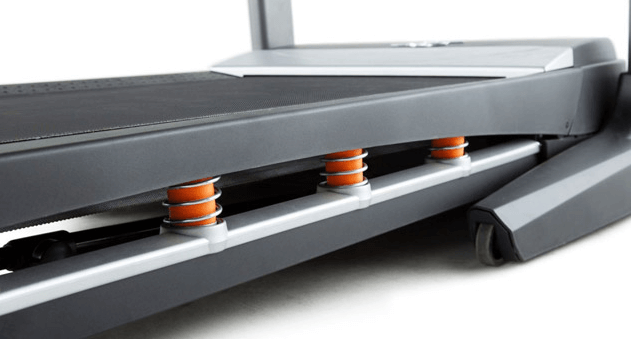
Here are some tips that will help you protect your knees from injury, even if you are a rank beginner in running.
- Start slow – I know the temptation to fire up that interactive workout program and start sprinting. But do not make that mistake. Start slow. In fact, start with walking for a few days until your knees and joints get used to the surface and the belt motion. Increase the speed slightly once every three to four days. Only run when you are sure that you have the right form.
- Wear the right running shoes. Running shoes are designed with multiple layers of cushioning that absorb shock at the heel strike. However, it’s equally important to replace the shoes after a while because the shock absorption capabilities of any running shoe keeps deteriorating. It is estimated that there’s a 50% drop in cushioning after 500 miles of running.
Is It Important to Buy a Quality Treadmill to Avoid Hurting Knees?
It absolutely is. By the right treadmill, I mean one with a cushioned deck that offers a 25-40% reduction in impact upon landing. There are many different types of cushioning systems on offer.
Each brand wants you to believe that their proprietary system is the holy grail of shock absorption. To give you a rough idea, here’s an overview of some of the tech you will encounter when you shop for treadmills. Buying a cheap treadmill without doing research is a very common mistake beginners to treadmills fall into.
Variable Flex Cushioning
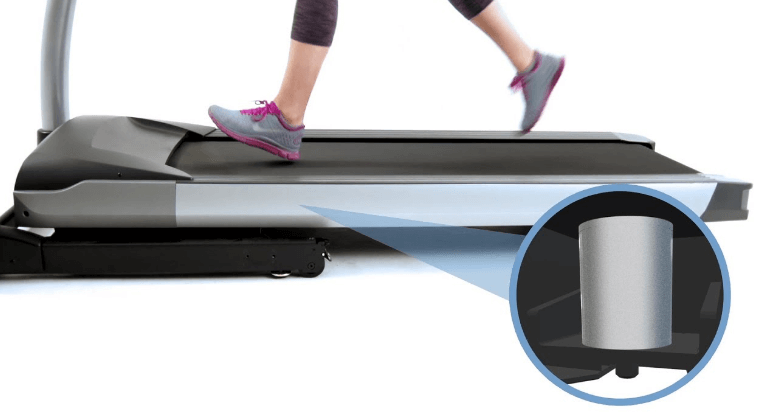
Used by Landice and is considered one of the best shock absorption systems. The deck only moves in a vertical plane. To add to this, the floating deck is 1” thick, while most of the competition offers ¾” thick decks.
Comfort Shock Cushioning
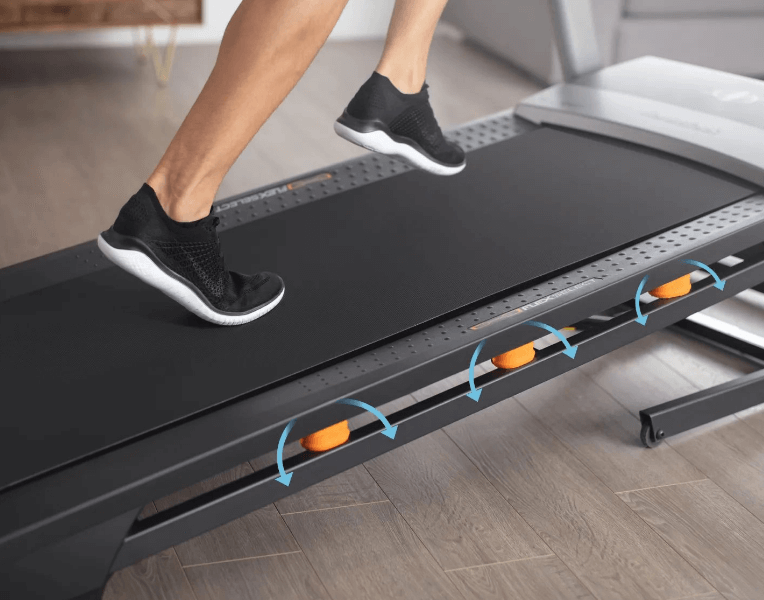
Used by Nordictrack on their budget priced models. They offer the DuraStride™ Adjustable Cushioning on their higher end models. This allows you to adjust the cushioning from soft to hard as per your training requirements. Reduces impact by 15-33%.
Soft Track Cushioning
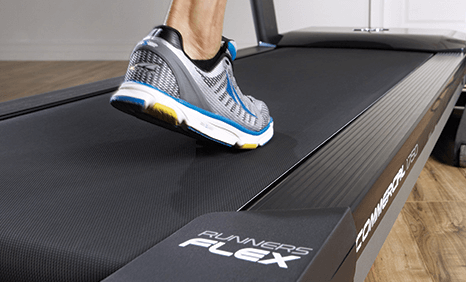
Used by Healthrider. Reduces impact by 15%.
Top 3 Treadmills for People with Bad Knees – These Have Very Cushioned Decks

If you are losing sleep about potential knee problems due to running on a treadmill, then let’s rule out the most important part of the equation.
Here are the top 3 treadmills for people with bad knees.
1 – Bowflex 10 – Most feature rich, Full sized
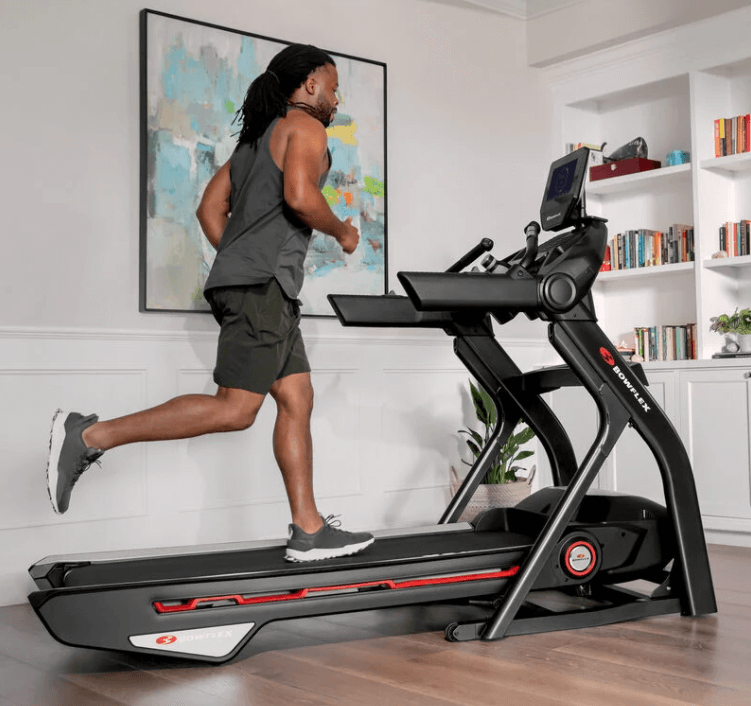
The Bowflex 10 is the most affordable treadmill from Bowflex’s range, which boasts of the famedComfort Tech™ deck cushioning system. There are 5 comfort Tech cells embedded under the flexible deck, which means that you get equal shock absorption, no matter where you land.
To add to this, it comes with a 10” Console and a with a 2-month free trial of JRNY™, which makes it easy to track how many calories you’re burning and other health benefits you’re reaping from your treadmill use. Besides, it also lets you choose from a wide range of workouts and running trails – since most people find treadmills boring, this feature goes the distance to make your treadmill use more fun. This treadmill also works with Zwift, which is my favorite exercise app. Overall this is a nice addition to your home gym setup.
Tech Specs
- Dimensions – 85″ L x 39.6″ W x 65.3″ H
- Running Deck Size – 60” x 22”
- Incline – -5% – 15%
- Speed –0-12 MPH
- Console Size – 10”
- Workout bundle – JRNY
- Warranty –15-Years on the Frame & Motor
What I like
Apart from the cushioning system, which is one of the best ones that money can buy, the Bowflex 10 also offers a full-sized running deck, one touch Incline and decline adjustments and a top speed of 12 MPH. That is in addition to it being a treadmill with a full featured digital screen, these are features you generally find in professional & commercial-grade treadmills.
Customer Reviews
The Bowflex 10 has an average customer rating of 4.7 out of 5. You can actually segregate the reviews by the type of usage. For instance, you can segregate it by ‘Low Impact Exercise’, which reveals the number of reviews by people who have used it for low impact exercise. There are quite a few actually with existing knee problems who feel that the cushioning is top notch and they have been able to use it for years with zero problems.
#2 – Sole F63 – Cheap Full Sized Option
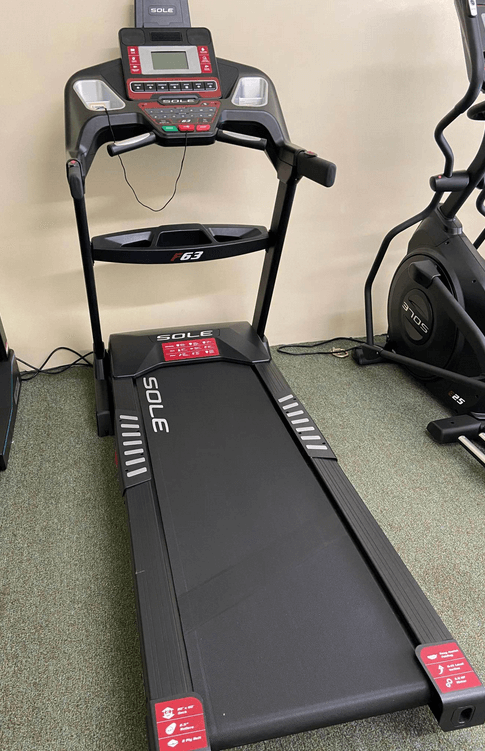
If you are not looking to spend as much as the Bowflex 10 costs, then check out the F63 from Sole. This is considered to be one of the best treadmills in its price category. That’s because of the feature list that rivals the Bowflex 10.
What are those features? For starters, it’s a 60” x 20” running deck. So, you can run at full stride. To add to this, it has an 8” step up height which makes it easier to get on, if you have knee problems. Lastly, it comes with a Cushion Flex Whisper Deck that reduces impact by 40%.
Tech Specs
- Dimensions – 82” L X 35” W X 66” H
- Running Deck Size – 60 X 20”
- Incline – 0 – 15 Levels
- Speed – 5 – 12 mph
- Console Size – 6.5″ LCD
- Workout bundle – NA
- Warranty – Lifetime on the Frame & Motor
What I like
If you are willing to overlook a few minor quibbles, this is as good as the Bowflex 10. It’s sturdy, it’s around 50% cheaper and it has an excellent customer rating too. The only thing that it doesn’t have is a dedicated workout console and a bundled interactive custom programs. But those aren’t deal breakers for me.
Customer Reviews
As I mentioned earlier, this is one of the top rated treadmills at this price point. It has an average customer rating of 4.5 out of 5. The reviews speak about the quality and the feature bundle. Also it has the best in-class warranty.
#3 – Good Cheap Option – Nordic Track T 6.5
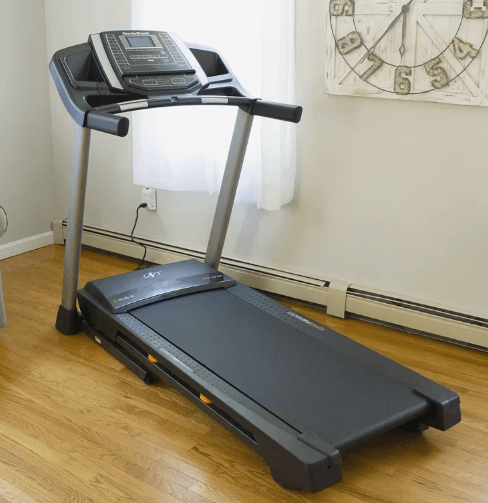
If you don’t have the room to accommodate a full sized treadmill like the Bowflex or the Sole F63 and want a small treadmill that suits an apartment or a small place, then check out the NordicTrack T 6.5.
This is a compact low profile treadmill with a 55” running deck that any physical therapist would swear by. While a 60-62” running deck is great, you don’t really need it unless you are taller than 5’10.
With the T 6.5, you can save some space and some money.
Tech Specs
- Dimensions – 73 L x 35.8 W x 67.5 H
- Running Deck Size – 55”
- Incline – 0-10% Incline
- Speed –0-10 MPH
- Console Size – 5” Backlit display
- Workout bundle – 30-Day Free iFit Trial Membership
- Warranty – 10-years on the frame
What I like
The NordicTrack T 6.5 features the Flex Select Cushioning system which uses rubber grommets of different sizes under the surface which makes it a great treadmill for seniors and beginners. iFit really expands the capabilities of the treadmill and gives you access to 16000 workouts, including live training sessions on demand.
Customer Reviews
The NordicTrack T 6.5 features almost 16500 reviews, with an average rating of 4.6. That goes to show how popular this treadmill is among home users. Also, it speaks volumes about the quality of the machine.
FAQ about Are Treadmills bad for knees
Here’s a brief FAQ that covers some of the common questions that people have about treadmills and potential knee problems.
Q. How Can I Run on A Treadmill without Hurting My Knees?
A. There’s two things that you can do. Work on getting your form right. Fix any flexibility or mobility issues that you may be having. That’s all that’s usually required. Oh yes, don’t forget to get a treadmill with the maximum cushioning.
Q. Are Treadmills Worse than Running Outside?
A. Not at all. In fact, some treadmill decks are much gentler on weight bearing joints as compared to the hard over ground surfaces outside. Besides, using a treadmill not only offers an excellent way to train, you also need not worry about outdoor inconveniences and hazards.
So you can stick to your regular exercise for longer every day, burn more calories, and improve your cardiovascular heath and reap other health benefits as you watch television right in your living room. As long as you don’t get a little carried away with your treadmill use and end up with overuse injuries, you’ll be better off with this one than hitting the trail.
Q. Does Walking on The Treadmill Put Pressure on My Knees?
A. It’s the same thing as running. As long as you have sufficient flex in your joints and you do not lean forward with drooping shoulders, walking on a treadmill for several meters every day will not put any additional pressure on your knees.
Q. What Are the Best Cardio Machines for Bad Knees?
A. If you have really bad knees, I would recommend an elliptical or a recumbent bike. Both these cardiovascular health machines are lower impact than using a treadmill (or outdoor running). And thus, they make for a good choice for athletes who have existing knee problems that prevent them from using a treadmill every day.
Related Readings:
- Best Treadmill Running Shoes For Women – Ladies Top Picks
- Treadmill Workouts for Seniors – Lowest Impact Exercises For Older Folks
- Best Self Propelled Treadmills – Top Bang For Buck Picks by Budget Range
- Sole F63 Vs Bowflex BXT6, Which is the Better Treadmill? Which Gives the Most Value for Your Money?
- How Long Should I Run on the Treadmill?
References:
- https://www.physio-pedia.com/images/3/30/Running_gait.pdf
- https://www.sciencedirect.com/science/article/abs/pii/S0021929006003563
- https://www.jospt.org/doi/full/10.2519/jospt.2016.6494
- https://www.bowflex.com/treadmills/t10/100909.html
- https://www.soletreadmills.com/treadmills/f63-sole-treadmill
- https://www.nordictrack.com/treadmills/t-65-s
Ben Mayz
Hi there! I'm Ben, main author and chief editor at Fitlifefanatics.com. I have been obsessed with Strength Training and Fitness for 18 years now.
My passion for living a happy fit lifestyle is what made me realize that fitness is what I wanted for my future.
I went on to earn my Masters in Sports Training & Biomechanics.
My passion for Strength training & fitness and my love of helping others is what made me start Fitlifefanatics.
Here, myself, and a team of specialist aim to provide the most accurate, and actionable information possible in hopes to help foster the fitness community forward.
You can learn more about Fitlifefanatics on our About Page
